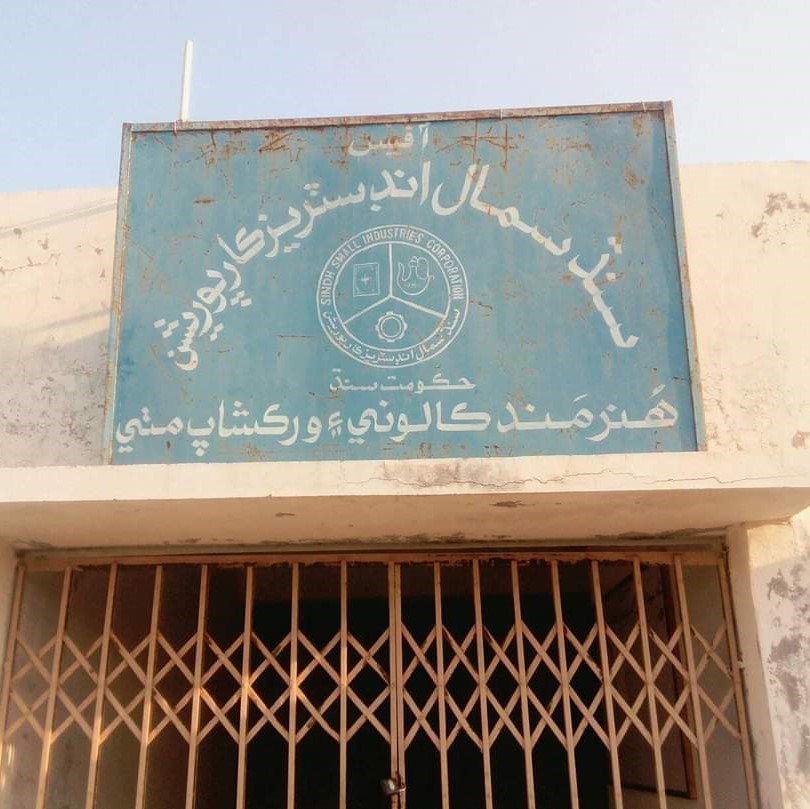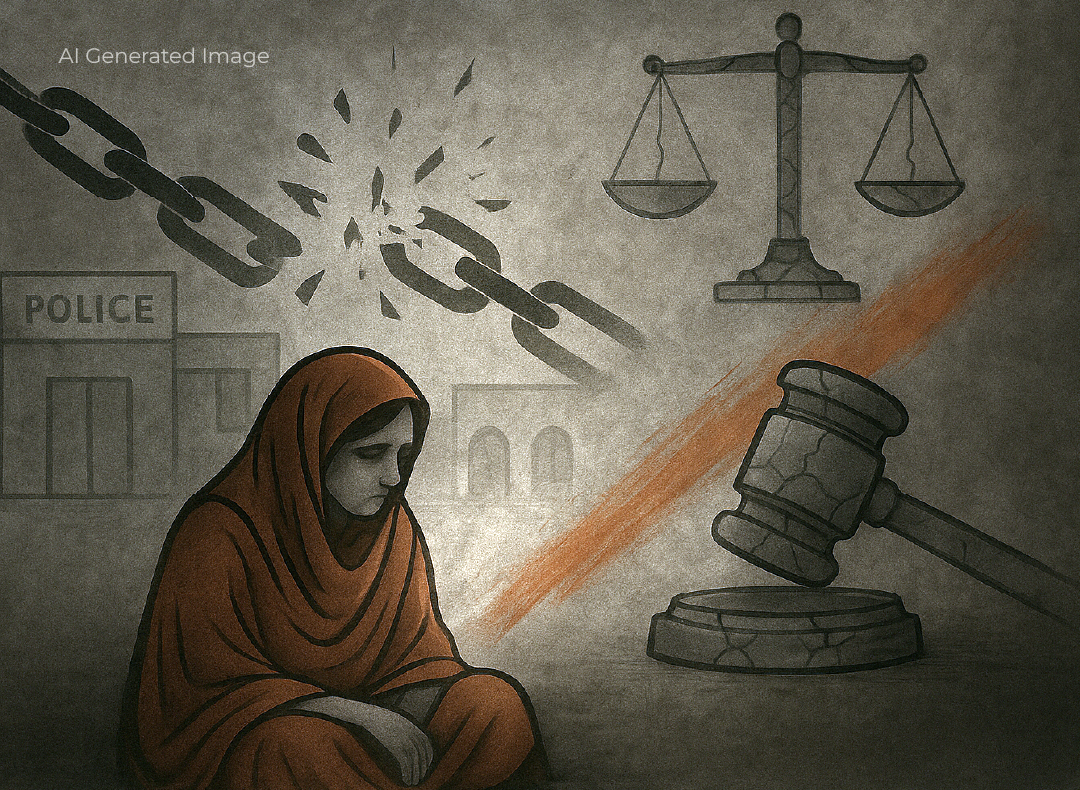Forty-year-old Haleeman lives in Dabhi village, about 30 kilometres (km) away from Mithi tehsil in the Thar district. Excellent at hand embroidery, she uses this skill to make beautiful designs on things like bed sheets and pillows. She’s been doing this work for many years.
But Haleeman has a problem. Only a few people in her village want to buy her embroidery. So, she has to go to Mithi City to sell her handcrafted items. Even in the city, selling things is difficult for her. Only four shops buy her things, and she’s sad these shop owners pay very little for her work. The money she gets barely covers the costs she had to spend to make the items, and she doesn’t make much profit.
Haleeman has two daughters; her husband works as a labourer and farmer. Their family depends greatly on good rain for their crops to grow well. If the rain isn’t enough, their way of making a living is in danger.
When Haleeman makes her embroidered pieces, she buys cloth from the market for Rs 1,000. The embroidery itself costs her about eight to nine hundred rupees. After working hard on each piece for many days, she sells them for around Rs 2,000 to Rs 2,100. That means she makes only about two hundred rupees in profit.
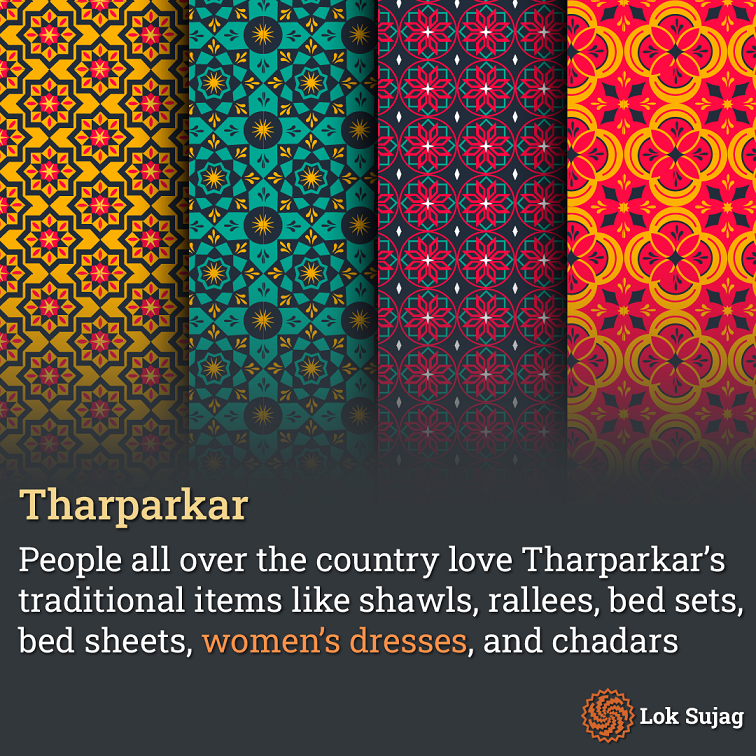
She says she does not have the means to go to big cities to sell their things and doesn’t know which city her goods can be sold in.
“I’ve heard that Mithi has become a place where skilled artists live and sell their things. If we were given a house and a shop here, our work would do well. But sadly, that hasn’t happened,” Haleeman says.
The embroideries and handicrafts of Tharparkar are famous because they are so unique. Traditional shawls, rallees, bed sets (pillow covers and sheets), and colourful women’s dresses and chadars are liked nationwide. Tourists also like buying Tharparkar’s special iron tools, pottery, pitchers, potolas, and pots.
Also, you can see the local culture in the special wooden furniture and cultural things made from wood from the area’s trees.
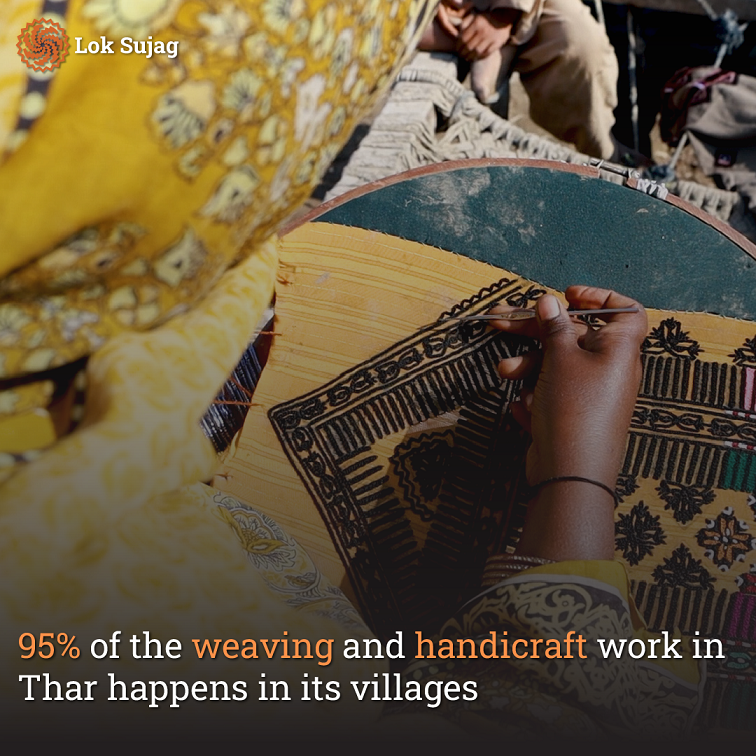
Ashiq Pajeer is a local person who works with different groups to help the community. He says that 95 per cent of the weaving and handicraft work in Thar happens in the villages. It’s hard for people in the villages to get their things to the city to sell because it costs a lot. If skilled artists can get help to have places to work in the city, there could be a big market for their things.
Looking at things this way, the Sindh Small Industries Corporation started a project in 2006. They wanted to make a place for skilled artists in Tharparkar. This project made the ‘Shah Abdul Latif Bhatai Skilled Colony.’ It’s only two km from the central part of Mithi on Nokot Road. The Sindh government gave 23 acres of land for this project, which cost 23 crore rupees. The project was finished in 2011.
The colony has 100 houses, 100 workshops, and 25 shops. It also has a place where people can show what they make, get medical help and a primary school for kids.
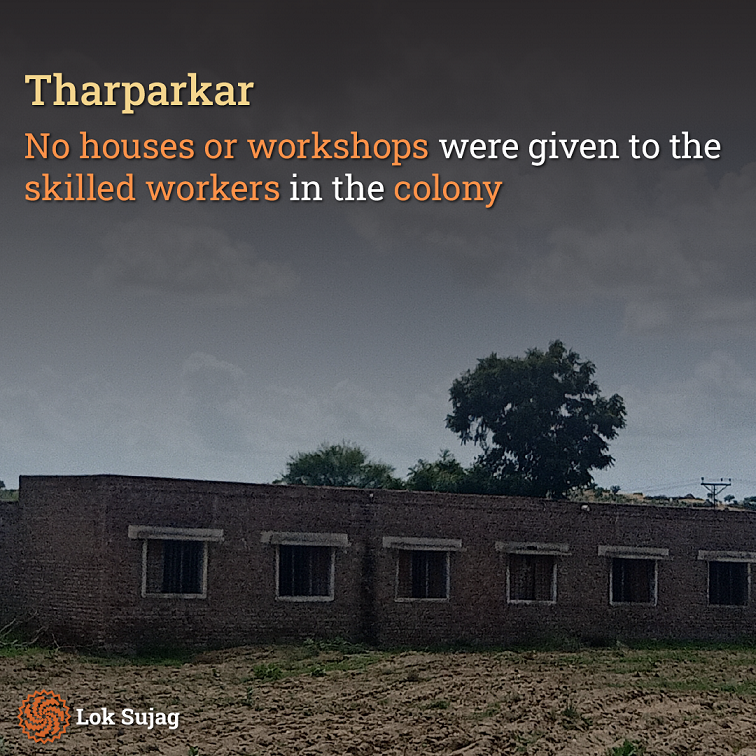
In May 2011, the then-provincial minister Rauf Siddiqui started the Hunarmand Colony. But for the last 12 years, skilled artists haven’t been able to use it.
There are 17 workers there. They have jobs like Clerk, Chowkidar, and Naib Qasid. But the position of Assistant Director, who is supposed to look after the colony, still needs to be filled.
Ganesh Lohar lives in Mithi and is forty years old. He makes tools like sickles, hoes, and axes that farmers use for planting and harvesting crops. He makes about Rs 5,00 to Rs 8,00 every day. Renting a shop costs at least ten thousand rupees, so Ganesh works from a hut by the road. But these roadside setups often get removed during drives against illegal structures.
When the skilled colony project started, Ganesh hoped he could get a shop there. He thought he could work with respect if he had a house in the colony. But this dream didn’t come true because the colony wasn’t working.
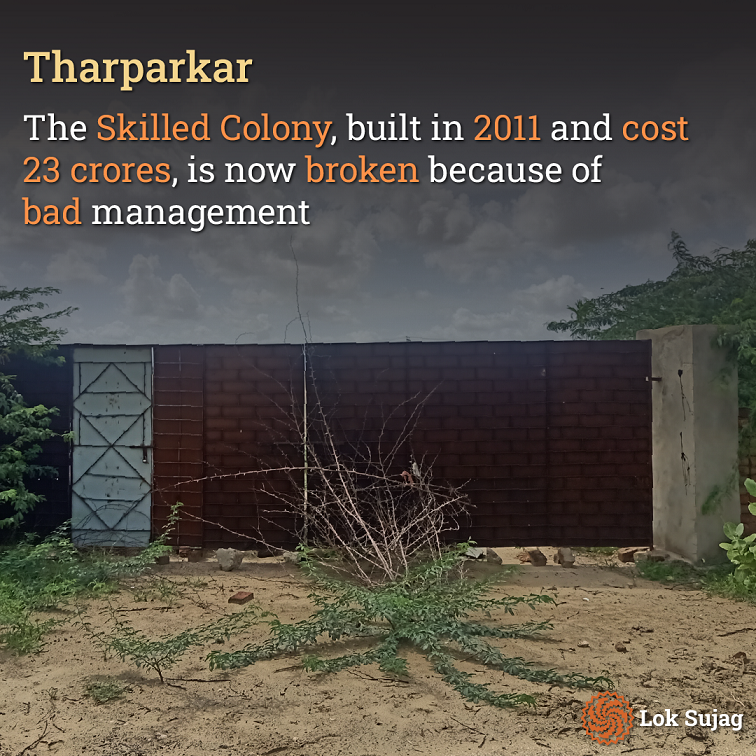
Ali Muhammad Khoso is from Sukkur and came to Tharparkar as a tourist. He wants to buy traditional clothes and cultural things. He likes how rich Thar’s culture and crafts are, just like its natural beauty. People visit Thar a lot during the rainy season. Putting all the skills in one place could help people sell more things and make more money locally.
Ashiq Pajeer says a skilled woman is present in every home in Thar, but their hard work rarely ever gets noticed. He says even though they built a colony, no artisans got houses or workshops. So, the colony is there, but the skilled people are still without help.
Also Read
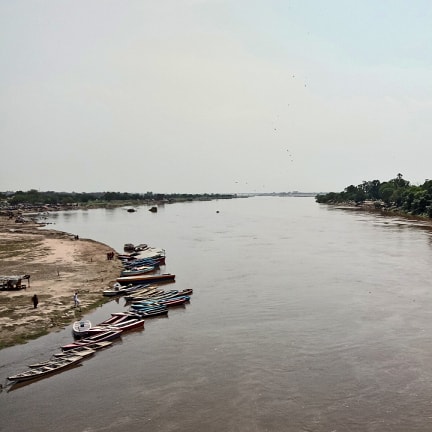
The cost of building a city on Ravi: 'The government is robbing us of our homes and hearths'
Someone from the Small Industries Department, who wants to remain anonymous, says politics got in the way of the project. “Now even the infrastructure is deteriorating. The gates of the colony have also been broken. Different political groups argued about who should get the houses and shops, and that’s why the project didn’t move forward.”
They say that as soon as the colony was inaugurated, a dispute started among political groups over the allocation of quarters and shops to preferred individuals. “Initially, the Assistant Director held the charge of this colony. Two years ago, this position was transferred to the Director in Hyderabad. Currently, the charge remains with them. Employees come here, have conversations, and then leave.”
Zafar Juneju, the Director of Sindh Small Industries in Hyderabad, knows there are problems with starting the project. But he says he can’t say more than this because government rules stop him from discussing it with the media.
Published on 17 Aug 2023
